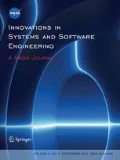Abstract
The “memory wall” problem has necessitated the introduction of more accurate memory metrics. C-AMAT, an extension of AMAT that considers memory access concurrency, can evaluate the performance of modern memory systems more accurately and comprehensively. However, compared to AMAT, calculating C-AMAT means additional complexity and more hardware resources, which incurs high overhead for this metric. In this paper, we propose FC-AMAT, an analysis model based on C-AMAT. We first explore the numerical relations between factors’ C-AMAT and overall C-AMAT, then try to use factor’s-first (changed factor or leading factor) C-AMAT to evaluate effects of changes applied to a memory system, which can not only reduce measurement overhead, but also guarantee acceptable evaluation accuracy through a rigorous check. Furthermore, we provide the method to determine the leading factor of a memory system. Simulations with varied configurations are conducted to study the numerical relations between factors’ C-AMAT and overall C-AMAT, as well as to evaluate the effects of FC-AMAT. Experimental results show that (1) parameters of factors’ C-AMAT have different influence degrees on overall C-AMAT, (2) the leading factor of a memory system remains unchanged across various configurations and (3) using factor’s C-AMAT as the evaluation metric reduces the hardware overhead for measurement, including detecting logic and storage cost, which demonstrates the effectiveness of FC-AMAT.











Similar content being viewed by others
References
Agarwal A, Royn K, Vijaykumar TN (2003) Exploring high bandwidth pipelined cache architecture for scaled technology. In: Proceedings of design, automation and test in Europe conference and exhibition, DATE’03, pp 778–783. IEEE Computer Society Press, Los Alamitos, CA, USA
Binkert N, Beckmann B, Black G, Reinhardt S K (2011) e.a.: the gem5 simulator. ACM SIGARCH Comput Archit News 39(2):1–7
Hennessy JL, Patterson DA (2006) Computer architecture, fourth edition: a quantitative approach. Morgan Kaufmann Publishers Inc., San Francisco
Kroft D (1981) Lockup-free instruction fetch/prefetch cache organization. In: Proceedings of the 8th annual symposium on computer architecture, ISCA’81, pp 81–87. IEEE Computer Society Press, Los Alamitos, CA, USA
Liu Y, Sun X (2015) Reevaluating data stall time with the consideration of data access concurrency. J Comput Sci Technol 30(2):227–245
Liu YH, Sun XH (2015) LPM: concurrency-driven layered performance matching. In: Proceedings of the 44th international conference on parallel processing, ICPP’15, pp 879–888
Ning Z, Chuntao J, Xian-He S, Shuaiwen S (2017) Evaluating GPGPU memory performance through the C-AMAT model. In: Proceedings of the workshop on memory centric programming for HPC, MCHPC’17, pp 35–39
Qi Y, Libo H, Cheng Q, Jianqiao M, Zhiying W (2017) Factor-based C-AMAT analysis for memory optimization. In: Proceedings of 11th international conference on verification and evaluation of computer and communication systems, VECoS’17, pp 79–91
Qi Y, Libo H, Cheng Q, Zhiying W (2017) BC-AMAT: considering blocked time in memory system measurement. In: Proceedings of ACM international conference on computing frontiers, CF’17, pp 230–236
Rummel R (2011) Understanding correlation. http://www.hawaii.edu/powerkills/UC.HTM. Accessed 12 Feb 2017
Spradling CD (2007) SPEC CPU2006 benchmark tools. ACM SIGARCH Comput Archit News 35(1):130–134
Sun X, Wang D (2012) APC: a performance metric of memory systems. ACM SIGMETRIVS Perform Eval Rev 40(2):125–130
Sun XH, Ni LM (1990) Another view on parallel speedup. In: Proceedings of the ACM/IEEE conference on supercomputing, SC’90, pp 324–333. IEEE Computer Society Press, Los Alamitos, CA, USA
Sun XH, Wang D (2014) Concurrent average memory access time. Computers 47(5):74–80
Wang D, Sun X (2011) APC: a novel memory metric and measurement methodology for modern memory system. IEEE Trans Comput 63(7):1626–1639
Wulf WA, McKee SA (1995) Hitting the memory wall: implications of the obvious. ACM SIGARCH Comput Archit News 23(1):20–24
Zhu Z, Johguchi K, Mattausch HJ, Hironaka T (2003) A novel hierarchical multi-port cache. In: Proceedings of the 29th European solid-state circuits conference, ESSCIRC’03, pp 405–408
Acknowledgements
We thank the anonymous reviewers for their feedback. This work is supported in part by National Natural Science Foundation of China under Grant Nos.: 61433019, 61472435, 61572508 and 61672526.
Author information
Authors and Affiliations
Corresponding author
Rights and permissions
About this article
Cite this article
Yu, Q., Huang, L., Qian, C. et al. FC-AMAT: factor-based C-AMAT analysis in memory system measurement. Innovations Syst Softw Eng 14, 143–156 (2018). https://doi.org/10.1007/s11334-018-0313-x
Received:
Accepted:
Published:
Issue Date:
DOI: https://doi.org/10.1007/s11334-018-0313-x



